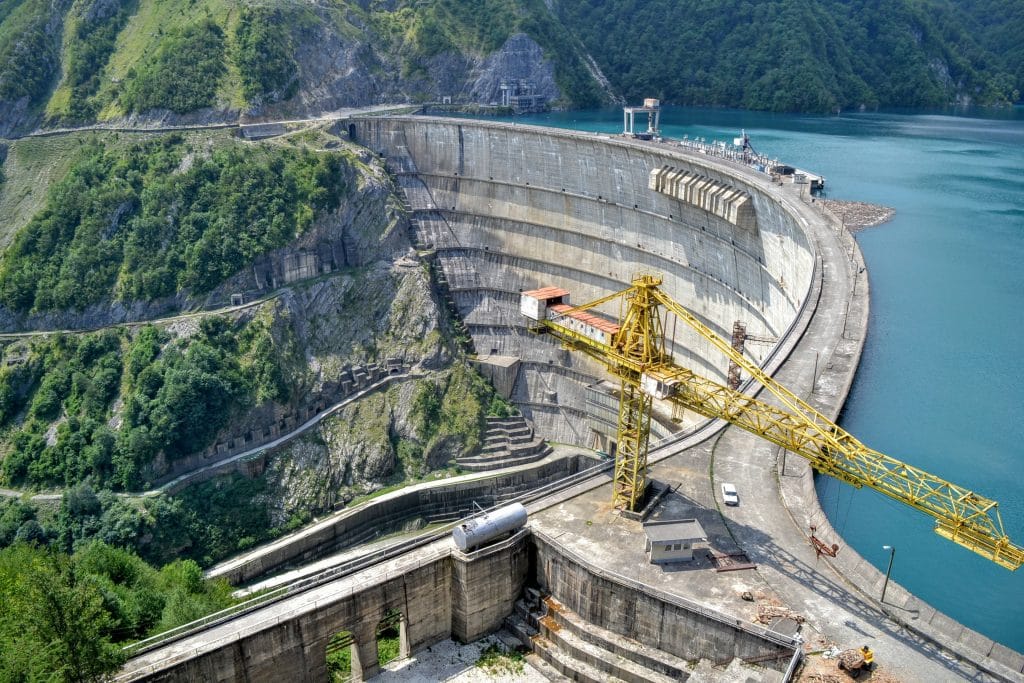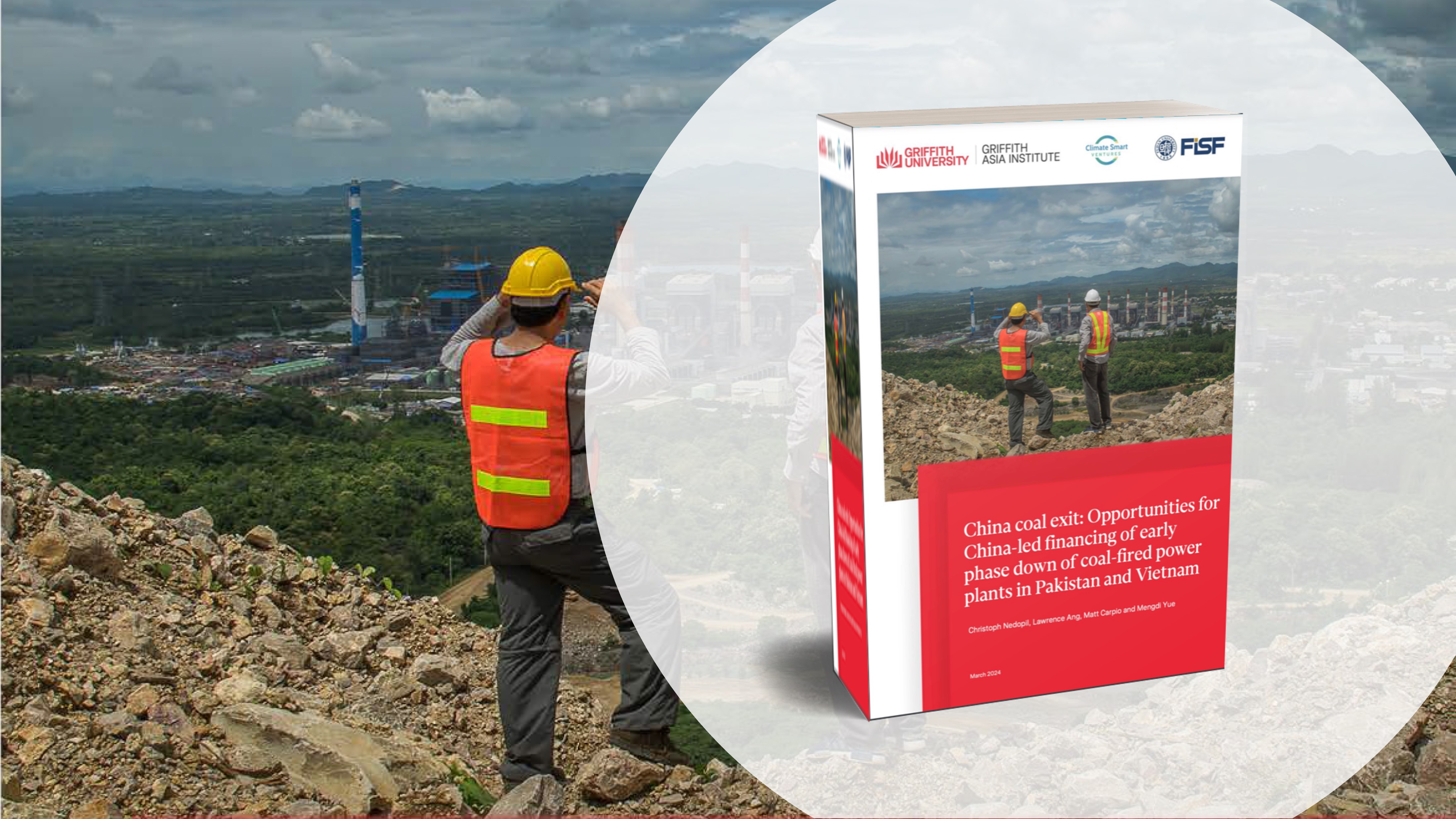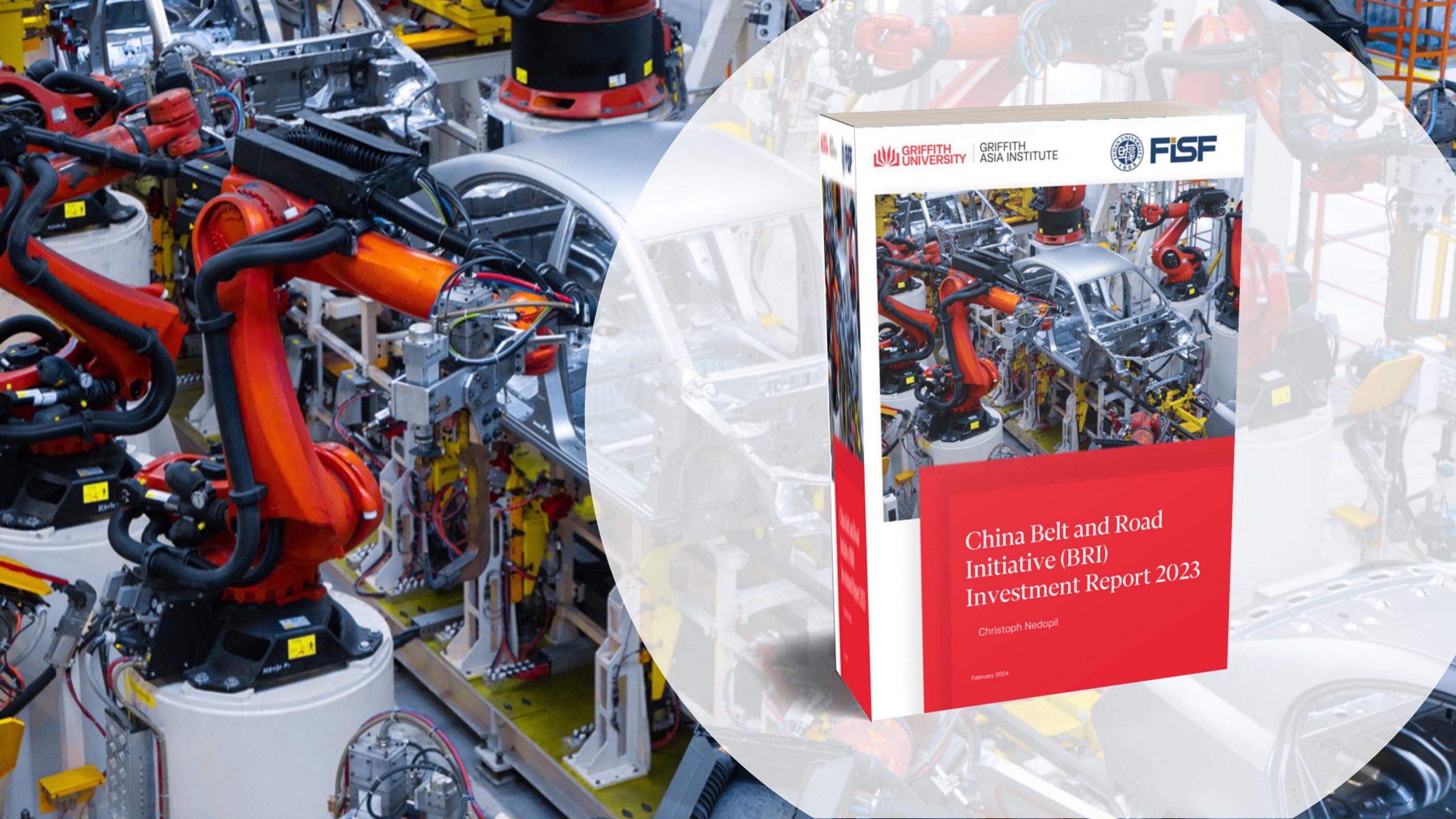In essence, the SDGs can only be met if they are an integral part of the development paths of countries under the Belt and Road Initiative (BRI). As the original 65 countries under the BRI collectively account for over 30% of global GDP, 62% of population, and 75% of known energy reserves[1], these ambitions can only be realized if they are included in the BRI. On the environmental front, most BRI countries’ environments are deteriorating and their Nationally Determined Contributions (NDCs) are misaligned with a 2-degree scenario, current development pathways must be changed. Likewise, on social aspects these countries are only on track to reach one of the 17 SDGs.[2] While the BRI is a China led initiative, it is an open ended initiative that any Asian and Pacific country can sign up to and be part of shaping. Given its expected impact, no matter if the perspective is positive or negative, active or inactive, all stakeholders from public to private across Asia and the Pacific will have to take a stance on the BRI.
While the BRI is the largest infrastructure initiative in Asia and the Pacific in terms of geographic scope and level of ambition, a number of other initiatives also exist. To ensure that sustainability factors are included in all initiatives, it is important to understand their linkages and actively work to ensure their mutual support. Concrete ways to ensure the mutual support of initiatives includes their specific mention in each initiative’s policy documents, inclusion of projects in more than one initiative simultaneously, ensuring the same technical standards are used for characterizing projects in each initiative, involvement of the same international investors, as well as host countries alignment between their own development plans and the related initiatives.
ASEAN: Adopted in 2016, the key infrastructure plan under the ASEAN framework is the Masterplan on ASEAN Connectivity 2015.[3] With a broad coverage of physical, institutional and people-to-people connectivity, sustainable infrastructure is a key subcomponent. Key initiatives under this component include a pipeline list of projects, a platform to measure infrastructure productivity, and developing sustainable urbanization strategies for ASEAN countries. It is clear that many BRI labelled projects overlap with the ambitions of the ASEAN initiatives, and consequently infrastructure project stakeholders may need to take into account both initiatives simultaneously, such as for example by including proposed BRI projects in the pipeline and platforms.
European Union (EU): At the west side of the BRI the European Union is a key stakeholder both as a key market and a key financier of BRI projects. The EU’s key strategy in this regard is the Connecting EU and Asia Strategy launched in September 2018 with a focus on transport, energy, digital, and human dimensions.[4] The EU and Chinese leadership have already clearly indicated their ambitions for cooperation such as highlighted in the Joint Statement of the 20th EU-China Summit of the July 2018, which also included a strong focus on sustainability and in particular climate change.[5] Towards the purpose of jointly promoting infrastructure investment, the EU-China connectivity platform was launched by the European Commission in late 2015, leading to an initiative such as the Trans-European Transport network and the upcoming China-EU Co-investment Fund (CECIF).[6] The inclusion of the European Investment Fund (under the EIB), and the CDB in this fund is a significant case of high-level cooperation.
United States: While the United States has at the level of the federal government adjusted its approach to global sustainable development, 2018 has brought a number of new measures with an impact on the Asia and Pacific region. First of all, the US Department of State’s launch of the Free and Open Indo-Pacific Strategy includes provisions on both sustainability and infrastructure.[7] It specifically mentioned sustainability as a priority and initiates the Infrastructure Transaction and Assistance Network as an interagency body to coordinate efforts to assess projects, direct development finance, and give technical assistance.[8] Furthermore, U.S. Secretary of State Michael R. Pompeo announced $133 million of funding to initiatives on Asian digital economy, energy, and infrastructure, in particular in support for the ASEAN Connect initiative, APEC, the Lower Mekong Initiative, and the Indian Ocean Rim Association. Lastly, reforming the US development approach the United States International Development Finance Corporation was established in 2018 which with its $60 billion funding can play an important role in supporting Asian and Pacific infrastructure.[9]
Japan: As a historically important funder of Asian and Pacific infrastructure through various channels, Japanese initiatives continue to play an important role. As the cornerstone of this ambition Japan together with the ADB will deliver the Partnership for Quality Infrastructure: Investment for Asia’s Future plan which includes $110 billion for infrastructure investment in the 2015-2020 period.[10] Sustainable development is listed as a key purpose of the plan. Furthermore, the Japan-India joint Asia Africa Growth Corridor plan, puts sustainable infrastructure into the context of Asia-Africa integration, similarly to the ever-expanding scope of the BRI.[11] While Japan and India remain skeptical to the BRI, with overlapping efforts and similar goals, dialogues within the two initiatives should include each other, while host countries should include both in its infrastructure planning.
Ayeyawady-Chao Phraya-Mekong Economic Cooperation Strategy (ACMECS): As a cooperation organization between Thailand, Lao People’s Democratic Republic, Cambodia, Viet Nam, and Myanmar, the Ayeyawady-Chao Phraya-Mekong Economic Cooperation Strategy (ACMECS), includes 5 year plans for infrastructure connectivity. At the 8th meeting taking place in 2018 the countries established an ACMECS Master Plan for the next five years (2019 – 2023) under the vision of Building ACMECS CONNECT by.[12] The plan specifically mentions the ambition to narrow the development gap, contribute to the process of ASEAN community building and to the achievement of the Sustainable Development Goals (SDGs) as well as the 2015 Paris Agreement on Climate Change. With numerous BRI projects in the region identifying how BRI financing can help support the ACMECS plan can contribute to achieving the goals of both initiatives.
Greater Mekong Subregion (GMS): With a similar scope to ACMECS, but adding the Chinese provinces of Yunnan and Guangxi, the Greater Mekong Subregion (GMS) was launched in 1992 with the help of the ADB to enhance economic relations between the countries.[13] As approved in Hanoi in March 2018, the two current strategic documents, the Hanoi Action Plan and the Regional Investment Framework, mention green, environmental, and low-carbon in abstract terms, but with limited inclusion in the justification for the more than 200 projects in the official pipeline. As many of the projects include cross-border components and as China is increasing infrastructure investment in the region, integration and coordination with the BRI could scale up both efficiency and investment scale. Inclusion of GMS pipeline projects on BRI platforms and discussion of GMS in the BRI Forum could promote such integration in practice.
Shanghai Cooperation Organization (SCO): Established in 2001 with its current 8 members cover the majority of Asian countries, with the exception of ASEAN countries, the SCO has increasingly prioritized cooperation on infrastructure. This was the key outcome of the 2015 meeting where transport infrastructure was identified as the most pressing issue for the region.[14] However, sustainability of climate issue is not stressed in public rhetoric of the SCO meetings nor in the key policy documents. While the United Nations Secretary General applauded the SCO for its contribution to infrastructure investment in Afghanistan to facilitate trade, the Secretary General simultaneously highlighted that such investment should consider human rights and other freedoms to be effective.[15] In terms of coordination with other initiatives, the SCO is well aligned with BRI efforts, given the key role of China in both initiatives. Furthermore, the formal coordination efforts set up between ASEAN and the SCO forms a best practice that all the mentioned initiatives should follow.[16]
Eurasia Economic Union (EEU): As both a political and economic union the EEU is comprised of Armenia, Belarus, Kazakhstan, Kyrgyzstan, and Russia and is centered around a single customs market, as established in 2010. Based on the economic and geographic circumstances in the region, energy and transport infrastructure is a key priority for the union. Sustainability issues are scarcely mentioned in strategic documents, while on energy in particular, the union focuses on establishing a common gas market with limited mention of clean energy.[17] Sustainability is only mentioned in the sense of sustainability of energy supply or sustainability of industrial development, and consequently not in reference to the scope and contents of the SDGs.[18] While there is a clear overlap between the joint ambitions between the EEU and BRI on regional connectivity infrastructure, there is no formal coordination mechanism.[19] Both initiatives would benefit from formalizing relations on similar terms as for example ASEAN and SCO, as mentioned above.
Central Asian Regional Economic Cooperation (CAREC) Program: Made up of 11 countries, CAREC was initiated in 2001 to develop regional projects and initiatives for sustainable economic growth and prosperity in the region. By 2018 the initiative has mobilized $32.9 billion worth of investments within multimodal transportation networks, increased energy trade and security, facilitated free movement of people and freight, and laid the groundwork for economic corridor development.[20] The initiative has strong multilateral involvement officially partnering with ADB, EBRD, IMF, IsDB, UNDP, and the World Bank. This ensures that projects with such MDBs and United Nations involvement include alignment with SDGs and the Paris agreement, while also applying high environmental and social safeguards. With China as a member of CAREC, and with both CAREC and BRI having a strong connectivity focus, the overlap between the two initiatives is clear. Efforts are already in place to seamlessly support each other, such as the ADB hosted forum on the potential of CAREC-BRI collaboration, at which the ADB Vice-President Zhang Wencai expressed: “The overlapping geographies of CAREC and BRI provide further impetus for close coordination to jointly build resilient and sustainable regional infrastructure, strengthen trade links, and create jobs and greater economic opportunities for all our countries“.
Recommendations for harmonization of BRI and other schemes
- Inclusion of projects in more than one initiative simultaneously. Infrastructure projects should be listed and labelled under several schemes simultaneously, when a project serves both schemes. This enhances alignment and avoid overlaps. Such listing includes website, databases, and official documents.
- Ensuring the same technical standards are used for characterizing projects in each initiative. To lower transaction costs and to promote seamless integration of infrastructure across the region, infrastructure schemes should explicitly adhere to ISO standards, and engage in dialogue between schemes to ensure compatibility.
- Involvement of the global capital markets. With institutional investors’ appetitive for sustainable infrastructure, the schemes listed should actively attract such sources of investors. This includes project pipeline lists, on-the-ground events, and dialogue with asset managers investing on behalf of institutional investors as asset owners.
- Host countries alignment between their own development plans and the related initiatives. Achieving the required change to a sustainable development pathway of many Asian countries, it is critical to align infrastructure investment schemes with host countries NDCs. This can be done through a stronger climate change focus in schemes’ strategic documents, and by allowing flexibility in implementation so that each country can tailor projects to local needs.
[1] World Bank (2018b). Belt and Road Initiative. Retrieved from: https://www.worldbank.org/en/topic/regional-integration/brief/belt-and-road-initiative.
[2] United Nations Economic and Social Commission for Asia and the Pacific (2018). Asia and the Pacific SDG Progress Report 2017. Bangkok, Thailand: ESCAP.
[3] ASEAN (2016). Vientiane Declaration on the Adoption of the Master Plan on ASEAN Connectivity 2015. Vientiane, Lao People’s Democratic Republic : ASEAN.
[4] European Union (2018). Connecting Europe and Asia – Building blocks for an EU Strategy. Brussels, Belgium: EU.
[5] European Union and China (2018). Joint statement of the 20th EU-China Summit. Beijing, China: EU and China.
[6] European Investment Fund (2018). First EU-China investment platform backed by the Juncker Plan. Available from: http://www.eif.org/what_we_do/equity/news/2018/silk_road_fund_initiative.htm.
[7] United States of America, Department of State (2018). Remarks on “America’s Indo-Pacific Economic Vision”. Available from: https://www.state.gov/secretary/remarks/2018/07/284722.htm.
[8] White House (2018). President Donald J. Trump’s Administration is Advancing a Free and Open Indo-Pacific. Available from: https://www.whitehouse.gov/briefings-statements/president-donald-j-trumps-administration-advancing-free-open-indo-pacific/.
[9] United States of America, Congress (2018). Summary: S.2463 — 115th Congress (2017-2018). Available from: https://www.congress.gov/bill/115th-congress/senate-bill/2463.
[10] Japan, Ministry of Foreign Affairs (2015). Partnership for Quality Infrastructure Investment for Asia’s Future. Tokyo, Japan: MOFA.
[11] Japan and India (2016). Asia Africa Growth Corridor. Ahmedabad, India: AfDB.
[12] Thailand, Ministry of Foreign Affairs (2018). Bangkok Declaration of the 8th ACMECS Summit. Available from: http://www.mfa.go.th/main/en/news3/6886/90570-BANGKOK-DECLARATION-OF-THE-8TH-AYEYAWADY-–-CHAO-PH.html.
[13] Asian Development Bank (2019). Greater Mekong Region (GMS). Available from: https://www.adb.org/countries/gms/main.
[14] China Daily (2015). SCO premiers say cooperation on infrastructure a priority. Available from: http://www.chinadaily.com.cn/world/2015-12/16/content_22722241.htm.
[15] United Nations (2014). Secretary-General, in Message to Shanghai Cooperation Organization, Applauds Commitment on Issues Vital for Afghanistan’s Future. Available from: https://www.un.org/press/en/2014/sgsm16137.doc.htm.
[16] Shanghai Cooperation Organization (2018). SCO-ASEAN Cooperation for Mutual Interests. Available from: http://en.sco-russia.ru/cooperation/20140905/1013179818.html.
[17] Stiftung Wissenschaft und Politik (2018). Eurasian Economic Union Integrates Energy Markets – EU Stands Aside. Berlin, Germany: SWP.
[18] Eurasian Economic Union (2015). Treaty on the Eurasian Economic Union.
[19] Central Asia Institute for Strategic Studies (2017). The Eurasian Economic Union and the Silk Road Economic Belt. Almaty, Kazakhstan: CAISS.
[20] Central Asian Regional Economic Cooperation (CAREC) Program (2019). CAREC Program. Available from: https://www.carecprogram.org/?page_id=31.
Mathias Lund Larsen is non-resident research fellow at the Green Finance & Development Center, FISF Fudan University. He is also a dual PhD Fellow at Copenhagen Business School and the University of the Chinese Academy of Sciences (Sino-Danish Center for Education and Research). His research is focused on the political economy of green finance in China from theory to practice, intention to impact, and domestic to overseas.
He has spent more than a decade working on the intersection between China, sustainability, and finance, and speaks fluent Chinese. He has previously held positions in the UN in New York, Nairobi, Bangkok, and Beijing and holds two double Masters degrees in and around political economy from Copenhagen Business School, Rotterdam School of Management, Sciences Po Paris, and Peking University.





Comments are closed.